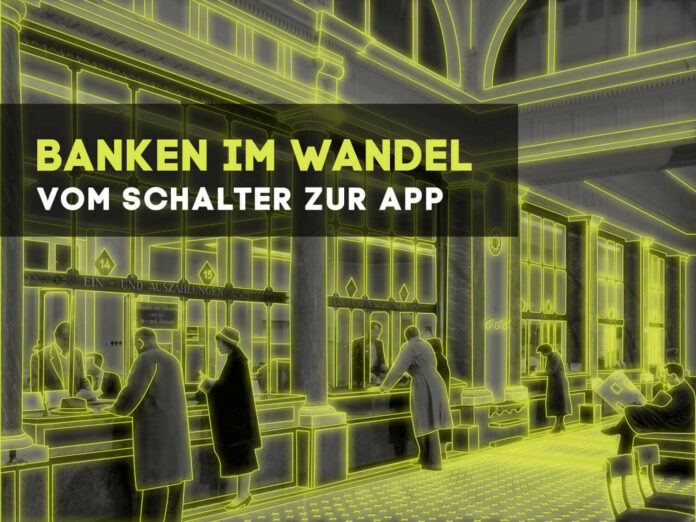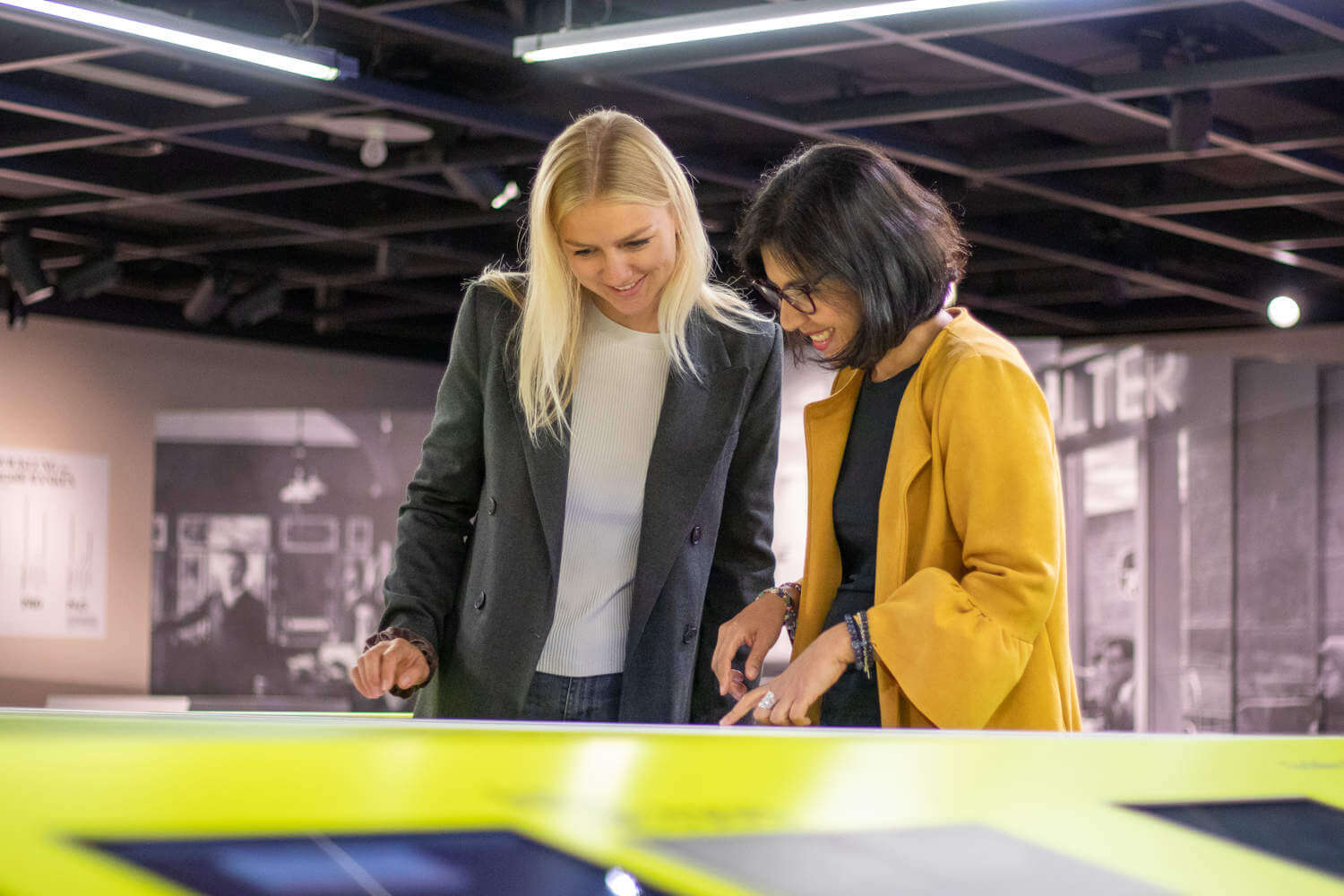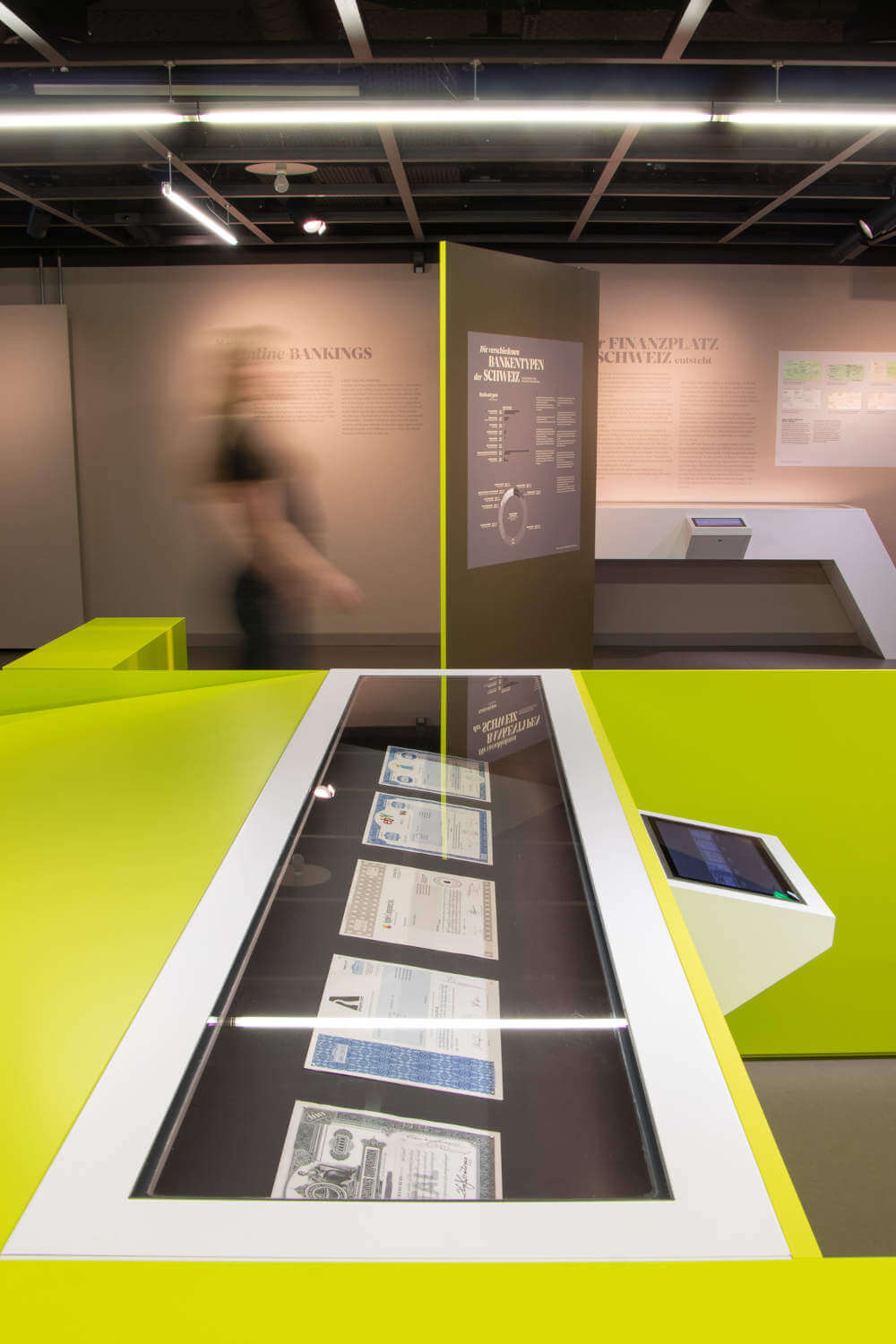
Over the past 20 years, the face of Swiss banks has changed significantly. Where once the personal contact in the branch office used to be a priority, banking has now arrived on the smartphone. Which leads to several questions: How do we pay, save and invest – today and in the future? Which institutions do we trust?
The exhibition shows the origins of the Swiss banking system up until the Swiss financial center takes shape, and contrasts them with the current, digital trends in banking: from counters to apps.
A selection of original historical securities will be used to showcase the types of Swiss banks, as well as global tech companies that are steadily driving digitization in the financial sector.
The aim of the exhibition “Banks in Transition: From the Counter to the App” is intended to show the transformation of the Swiss financial center and the relationship between private clients and banks. Whereas personal contact in the branch used to be the main focus, banking has now moved to the smartphone, in an anonymized form.
The exhibition’s first section is devoted to history and shows the roots of Swiss banking: From the Middle Ages, when the first merchants became settled bankers, through the 16th and 17th centuries, when exchange offices fulfilled the first functions of a central bank and the first private banks were founded, Swiss banks then evolved in the 19th century into what would later become the Swiss financial center. On display in this section are historical securities of Swiss banks as well as the oldest bank still in existence; the “Monte dei Paschi di Siena”.
The emerging Swiss financial center was characterized by a heterogeneous banking landscape – from the local savings bank to the private bank to the big bank; illustrations explain the different typologies and how they were weighted.
Since the advent of the internet, there has also been quite a bit of momentum in banking. This is shown in another part of the exhibition. For example, the tools that exist today only in digital form: In the past, deposits were made with physical payment slips and yellow receipt books at the Swiss Post Office, but today deposits have long since become an integral part of every e-banking service. The same applies to the “Spar-Buechli” – the booklet that certified the ownership to the holder of a bank account as well as all transactions has today been replaced by digital account statements.

At the same time, the number of branches has been steadily decreasing ever since; banking is migrating first to the internet and then to the smartphone. In the final part of the exhibition, dedicated to the present day, visitors can find out what neobanks are, what role mobile phones and artificial intelligence play in banking. This exhibition area will be highly interactive in order to translate the advancing digitalization into a haptic experience. As a highlight, two tablets are available on which visitors can get to know banking and retirement apps. A robo-advisor can be tested at an interactive station. Similarly, another display table explains new phenomena such as cryptocurrencies or NFTs and gives banking experts and a financial expert the floor. This part is complemented by securities of tech companies such as Amazon or Apple, which are trying to upend the financial sector.
For more information, visit the Swiss Finance Museum website.
If you plan a visit, you can download the multimedia smart phone audio app on the museum’s website.
In 2017 we reported on the new opening of the museum, in 2019 already the Swiss Finance Museum was nominated for the European Museum of the Year Award.








